CES 2006: Motherboards, Memory, Cooling, and a Few Surprises
by Wesley Fink & Jarred Walton on January 11, 2006 12:05 AM EST- Posted in
- Trade Shows
ASUS
The bread and butter of ASUS has always been motherboards, and it comes as little surprise that they have products using just about every conceivable chipset and for every market segment.
At the high-end, they have the workstation class P5WDG2-WS motherboard using the 975X chipset and sporting dual PCI-X slots as well as dual PCIe X16 (with X8 data connections) slots for CrossFire.
They're also working on "Digital Home" uATX boards for Pentium D (P5LD2-VM DH) and Core Duo (N4L-VM DH), which naturally means that they're Intel Viiv ready. Viiv has been a major point at most of the motherboard locations, and it appears to be the HTPC equivalent of Centrino: a mostly pre-existing set of technologies that are now being grouped and branded under a single name. Like Centrino, the Viiv name will require the use of an Intel processor (dual core Pentium D or Yonah/Core Duo) and chipset. The push into the consumer space is often more about marketing than technological prowess, and Viiv will be leading the way. Don't get us wrong - it's not a terrible platform, but honestly, it doesn't appear to add anything new to the market; it's just Intel's take on HTPC.
We found their Asus A8R-MVP to be a good quality ATI CrossFire solution at a great price, and they're looking to improve on the design with the RD580-based follow-up, the A8R32-MVP. The RD580 chipset will be the first major chipset to support true dual X16 slots off of the Northbridge, and it looks to be one of the more exciting chipsets of the coming year. The layout has also been modified from the original MVP to improve the support for running two large GPUs, with two slots separating the X16 slots. Overclocking should be even better than the already impressive RD480-based boards. It's a bit surprising that the design is still targeting the mainstream market rather than the high-end, since in every other way, this appears to be a great high-end board.
ASUS was also one of the few locations to have a K8T890 board on display, their A8V-E SE. While the features and specifications on the board appear decent, it's difficult to find a place for the board in an already crowded market. Compared to nForce4 Ultra boards, the lack of SATA 3.0 Gbps support or any other standout features seems to indicate that this is largely a value-oriented board. As long as the price and performance are right, though, there will likely be a few willing buyers.
The bread and butter of ASUS has always been motherboards, and it comes as little surprise that they have products using just about every conceivable chipset and for every market segment.
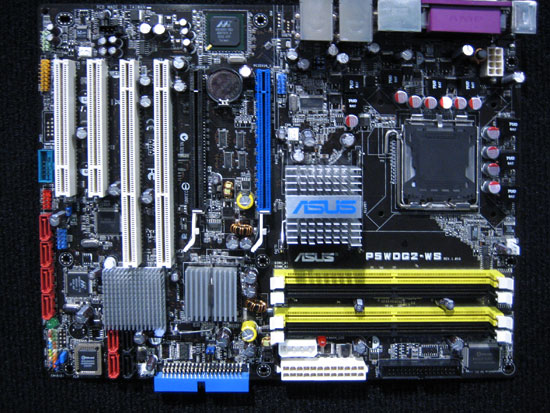
At the high-end, they have the workstation class P5WDG2-WS motherboard using the 975X chipset and sporting dual PCI-X slots as well as dual PCIe X16 (with X8 data connections) slots for CrossFire.
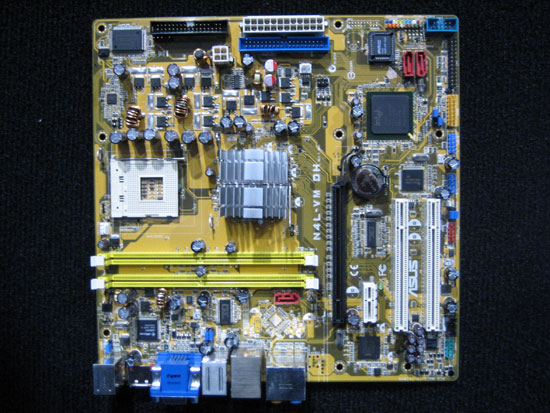
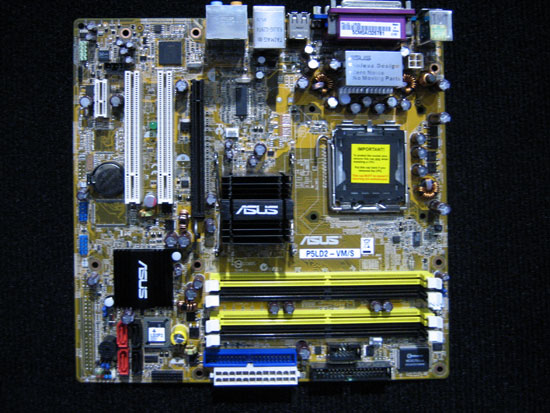
They're also working on "Digital Home" uATX boards for Pentium D (P5LD2-VM DH) and Core Duo (N4L-VM DH), which naturally means that they're Intel Viiv ready. Viiv has been a major point at most of the motherboard locations, and it appears to be the HTPC equivalent of Centrino: a mostly pre-existing set of technologies that are now being grouped and branded under a single name. Like Centrino, the Viiv name will require the use of an Intel processor (dual core Pentium D or Yonah/Core Duo) and chipset. The push into the consumer space is often more about marketing than technological prowess, and Viiv will be leading the way. Don't get us wrong - it's not a terrible platform, but honestly, it doesn't appear to add anything new to the market; it's just Intel's take on HTPC.
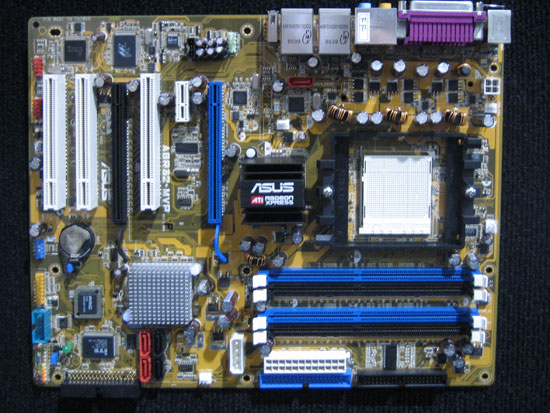
We found their Asus A8R-MVP to be a good quality ATI CrossFire solution at a great price, and they're looking to improve on the design with the RD580-based follow-up, the A8R32-MVP. The RD580 chipset will be the first major chipset to support true dual X16 slots off of the Northbridge, and it looks to be one of the more exciting chipsets of the coming year. The layout has also been modified from the original MVP to improve the support for running two large GPUs, with two slots separating the X16 slots. Overclocking should be even better than the already impressive RD480-based boards. It's a bit surprising that the design is still targeting the mainstream market rather than the high-end, since in every other way, this appears to be a great high-end board.
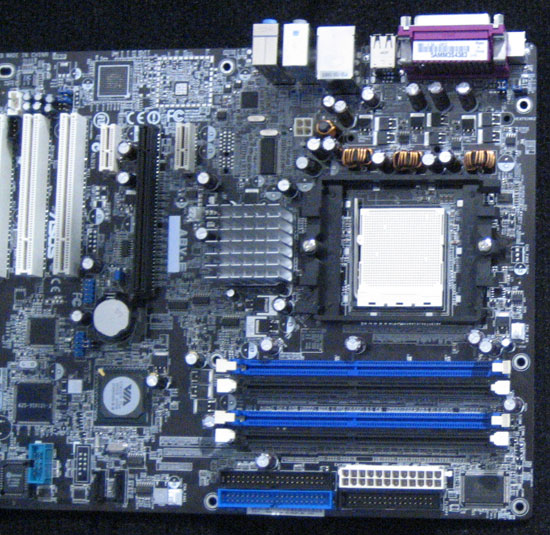
ASUS was also one of the few locations to have a K8T890 board on display, their A8V-E SE. While the features and specifications on the board appear decent, it's difficult to find a place for the board in an already crowded market. Compared to nForce4 Ultra boards, the lack of SATA 3.0 Gbps support or any other standout features seems to indicate that this is largely a value-oriented board. As long as the price and performance are right, though, there will likely be a few willing buyers.










36 Comments
View All Comments
Leinad - Saturday, March 4, 2006 - link
I see that the Corsair Nautilus500 is available, and at pretty much the expected price. I have searched around looking for any information on the Cryo-Z, and don't see any. Just curious if anyone in Anandland had any further information...I also wanted to second the request/suggestion of the addition of a cooling area to Anandtech.
yacoub - Thursday, January 12, 2006 - link
And the best thing about all the Asus boards pictured? EVERY ONE OF THEM IS PASSIVELY COOLED. About time. Dinky motherboard fans are the bane of many otherwise-quiet systems and they're often of such poor quality as to die within a few months and leave the user with a board that can overheat.Very nice work, Asus.
JarredWalton - Thursday, January 12, 2006 - link
Funny you should mention that. I have an ASUS K8N4-E Deluxe board that has been used less than 3 months. It has a dinky NB HSF, and guess what died this past week? So now I replaced that 30mm or whatever fan with a spare 60mm fan jury-rigged into the case, and it cools better and runs quieter. Small fans are garbage.SignalPST - Wednesday, January 11, 2006 - link
Sounds very promising. Hopefully, they'll fix the problems with the NB heatsink and 7800GTX 512MB getting in the way. When should we expect more details for this board?
FlyingShawn - Wednesday, January 11, 2006 - link
Quick correction on what looks like a typo on your DualCor coverage. The article states that the 1.5 Ghz processor runs XP Pro and the 400 Mhz runs XP Tablet. Actually, the 1.5 Ghz runs XP Tablet and the 400 Mhz runs Windows Mobile 5. So basically you have a full XP Tablet for when you need it and the instant-on benefits of a Mobile 5 PDA for when you need information like PIM data quickly.abakshi - Wednesday, January 11, 2006 - link
Yeah I was about to post that.That brings up another interesting issue though -- is data synchronized between the two sections (e.g. Outlook contacts/calendar/etc.), and do that mean you can run both parts at once and simply switch between the two (since they seemingly share only the user interface elements)?
Wesley Fink - Wednesday, January 11, 2006 - link
Yes, DualCor was demoing synchronized data between the 2 OS. I will correct the OS/processor statements in a few minutes.monsoon - Wednesday, January 11, 2006 - link
since we didn't get the new MAC MINI at Macworld, i'm eager to read your coming review of the AOpen PC Mini with CORE DUO insideHoudani - Wednesday, January 11, 2006 - link
Those Aopen boxes look stupendous on the outside. I'm eager to hear how their innards fare. All three of them there boxes are intriguing.wilburpan - Wednesday, January 11, 2006 - link
This is probably the wrong trade show for this, but was there any indication from CES as to whether BTX is increasing its penetration into the market?